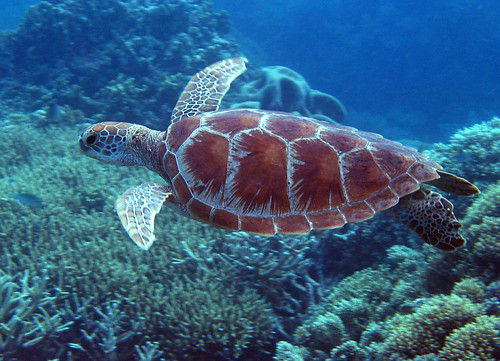Consisting of over 1,600 miles of coral reefs, the Great Barrier Reef is the world’s largest reef system. The infamous reef system is located off the coast of the Australian state of Queensland.
Great Barrier Reef

Moreover, the reef consists of more than 900 islands and 3,000 independent coral reefs. Ever year, thousands of people come to see this great natural wonder and the different types of animals and plants that inhabit it.
Great Barrier Reef, Cairns

Generally speaking, a lot of plants and animals inhabit the islands. Most of them are only found in this area – making them truly native to Australia. Furthermore, the vegetation on the island is very ripe and filled with plants, such as algae and sea grass.
Turtle in Great Barrier Reef

In fact, in the Great Barrier Reef, there are more than 500 different types of algae and more than 60 types of sea grass. In addition, there are smaller numbers of other marine and plant life, around the reef, including an array of prawns and fishes.
Great Barrier Reef, Cairns

In the reef, the sea grass is only plants that can live in the seawater that surrounds it, since the waters around the reef are very salty. Also, there are small turtles that live on the island as well.
Moving on to more algae on the reef, there is the brown algae, plankton algae, red algae and the golden algae. The algae are a very important source of food for many of the species that live on or near the island.
Sharks in Great Barrier Reef

In addition, the algae on the reef can be beneficial to the health of people as well. Algae contains an excellent source of fiber and protein and have been known to lower the levels of cholesterol and blood pressure in many people.

In short, the Great Barrier Reef is not only a place to see and admire, but also a place where you can find some of the world’s most exotic plants and animals. If you like, you can take a bit of seaweed and algae and use it in your food, but beware that some of the seaweed and algae are not safe to eat, so find out which plants are safe to eat and not to eat.
No comments:
Post a Comment